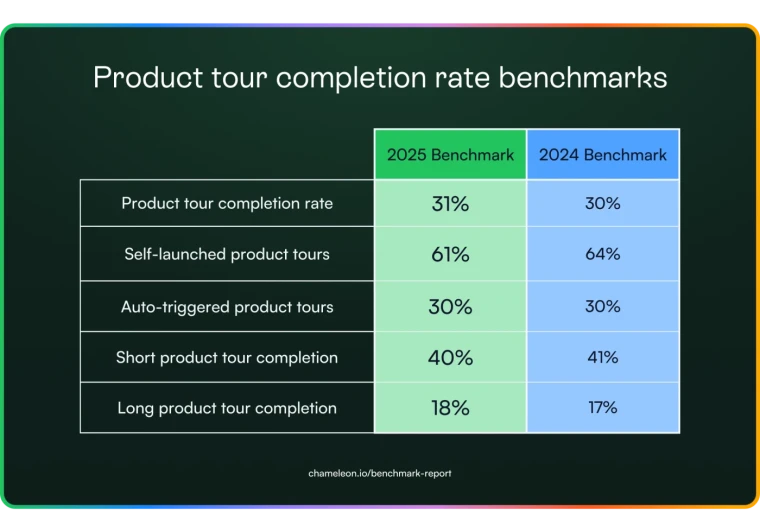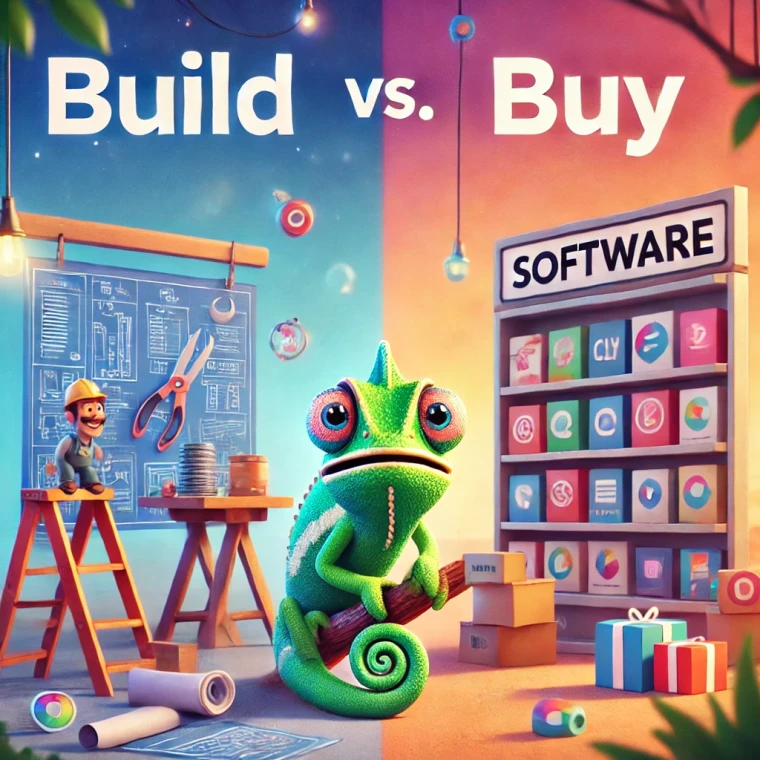Product-led growth is the phrase on every SaaS team's lips right now but applying its principles to your go-to-market strategy is a complex process. It can be hard to know how to start and resources are scattered all over the web. In this article, you will get all the templates, worksheets, tools, videos, and examples you need to do a great job. You will be able to:
Create well researched ideal customer profiles
Apply what you learned during your research to craft the perfect strategic narrative
Define a product offering and pricing that fits customer needs
Make a great onboarding experience
Find the right growth loops to reduce acquisition costs
Recap: What is product-led growth?
Product-led growth is a go-to-market strategy where the product is the lever to convert and retain customers.
It has become more prominent in the past few years because of three changes:
Startups are more expensive to grow. As it's never been so easy to launch a startup, there's a lot of competition in many markets.
Buyers now prefer to self-educate. People are warier of big promises from sales and choose to learn about your product by themselves.
Product experiences have become an essential part of the buying process. Trying a product and buying it without talking to anyone gives more freedom
Sales-led growth isn't adapted to these changes and that's why product-led growth is becoming more prominent.
But implementing a product-led go-to-market strategy is difficult! It's not just having a self-serve product, there's so much more.
So let's break down the five components you absolutely need to create a great strategy and the best resources to help you in doing so.
Ideal Customer Profile (ICP): the foundation of the strategy
An Ideal Customer Profile (ICP) represents a made-up company that is the most likely to buy your product.
It creates a shared understanding inside your company and informs all the decisions you take on the product features, offerings, and pricing, as well as the marketing copy and your sales efforts.
The ICP is the first step to any go-to-market strategy, whether it's product-led, sales-led, or marketing-led. But for a product-led approach, we want to make sure it fits the tidal waves. For example, some companies still prefer concierge onboarding to self-serve onboarding. They might also have a buying process not compatible with a product-led approach. Therefore, you must identify them and avoid them.
An ICP is usually composed of these characteristics:
The customer should be ready to solve a problem they have.
It has a reason to be willing to solve it now.
It must be able to solve the problem (i.e. money or authority)
It has success potential. Your product must be a good fit for their technical knowledge, resources, culture, experience, competence, and functional needs.
It is efficient to acquire. In simple terms CAC < CLTV.
It must have ascension potential. There need to be opportunities for upselling and cross-selling.
It should be a good advocate. Whether with word-of-mouth or the ability to leverage them for social proof and marketing campaigns.
While most characteristics are pretty forward, the most complex and the most important one will take you time to analyze: success potential.
The best guide on success potential
This article from Lincoln Murphy, author of the book “Customer Success: How Innovative Companies Are Reducing Churn and Growing Recurring Revenue”, will help you understand success potential and understand which are your best customers.
ICP templates you need right now!
This free ICP Kit from Close includes a checklist for prepping your research, sample customer survey questions based on your industry and sales approach, and downloadable ideal customer profile templates. That's a great resource to organize your efforts!
Strategic Narrative
Here's a quote from Drift's founder and CEO, David Cancel:
Today you are not going to win on product features -- you have to win on brand.
But in practice, what does it mean? It means you need to have a strong, clear, and consistent narrative that will make your brand stand out against the competition. For example, Drift defined a new product category in 2020 and made themselves the leader of that category. They have explained this move in a detailed blog post.
But that's not a reason to make an extravagant narrative! Overpromising and under-delivering is going to hurt your strategy. Especially with a product-led approach:
People want to “try before they buy” and experience your value proposition. If you keep your word, it’s a great way to build trust and sell your product. If you fail to deliver, your user experiences a nasty value gap.
– Wes Bush from his product-led growth definition
That's why crafting a great strategic narrative is so important in a product-led go-to-market strategy. Potential customers interact with your company with minimal interactions with the sales team, so if your copy isn't perfect there's almost no opportunity to correct misunderstandings later.
To get you on the right path, here are some great resources you can use to make your strategic narrative.
The reference article on strategic narrative
Mark Bonchek, founder and CEO of Shift Thinking, explains in this article of the Harvard Business Review how to build a strategic narrative. Here's the key takeaway:
A strategic narrative is a special kind of story. It says who you are as a company. Where you’ve been, where you are, and where you are going. How you believe value is created and what you value in relationships. It explains why you exist and what makes you unique.
The best book on positioning
Obviously Awesome from April Dunford, founder of Ambient Strategy and market positioning consultant, is a great read! Here's what you'll learn:
How to break positioning down into five component pieces.
How the component pieces relate to each other and why that matters.
How to determine your product’s unique value.
How to choose the best market for your product, including three styles of positioning.
How to leverage market trends to help close more business right now.
From the link above, you can also get access for free to a few resources like a positioning canvas, strategic narrative outline, and messaging document.
Strategic communication template
Finally, I want to mention this article from Myk Pono about strategic communication development that includes a great template to organize all the elements you need for your messaging.

Product Offering and Pricing
There are 3 components for this part you need to define: pricing model, activation model, and pricing strategy.
The pricing model is the way a customer pays for your product. The most popular is the tier-based model but there are many and it’s not an easy choice to make.
With the activation model, you are choosing how your customers will try your product before buying. With a product-led approach, it's generally freemium or free trial. But paid trials are sometimes used. For a product like Ahrefs, the cost of onboarding is big so they can't really do free trials.
Finally, for the pricing strategy, you can think of the models as the foundations upon building the strategy. When you have chosen your models, there's a lot of criteria to decide to define your pricing: positioning, discounting, anchoring, charm pricing, bundling, perks, localization, making a recommendation.
The demystification of SaaS pricing models and strategies
Start with this guide from Baremetrics that goes through all the pricing models, activation models, and the components of the pricing strategy.
The best free book to create your pricing strategy
You can get the book on Price Intelligently. You will get all the help you need to create your pricing strategy. It goes into:
The importance of value-based pricing
How to quantify your buyer personas
Determining your value metric
Proper pricing page design
Implementing a pricing process
Why you shouldn’t A/B test your pricing
How to localize your pricing
How discounting will kill your growth
Quiz to choose between free trial and freemium
This quiz from Wes Bush, author of Product-led Growth, will ease your work if you don’t know which one to choose.
User Onboarding
If the rest of your strategy works, customers will sign up. But that's only part of the battle. The product has to deliver an experience matching what the message promised.
Because buyers now prefer to self-educate, in a product-led go-to-market strategy onboarding is self-serve. The product experience is part of the buying process. Onboarding is crucial to make customers succeed.
But it takes an incredible amount of time to create a great onboarding experience. There's just so much that needs to be done for customers to stick: product tours, checklists, help center, in-app messages, emails, empty states, templates, sample data, etc.
So here are a few resources to build a proper onboarding strategy.
The complete guides to customer onboarding
With this guide on SaaS onboarding, you will learn all the best practices you need for your onboarding.
Copywriting: where to focus your copywriting efforts to increase sign-ups and onboarding success rate.
UX: how to improve the experience everywhere it matters to optimize onboarding.
Emails: how to write great onboarding sequences to make people get back to your app and finish the onboarding.
High-touch: how high-touch customer interactions can still help product-led onboarding by focusing on education.
This guide to user onboarding spins the topic on its head and reexamines everything you thought you knew about guiding users to find new value in your product.
15 onboarding tools your customers will thank you for
Because crafting the perfect onboarding is so time-consuming, using the right tools will give you great value. This list of onboarding tools provides you with everything you need.
Great onboarding teardowns to learn from
But even with the best practices and the right tools, there are a lot of things to learn and the best way to do that is through onboarding teardowns. Productled.com has a great video teardown that is very informative. You can also get great teardowns on UserOnboard.
Growth Loops
In a product-led go-to-market strategy, you want to reduce acquisition costs. Ads, affiliates, and other traditional sales and marketing tactics cost a lot of money.
But if the usage of the product itself could be an acquisition channel, then the costs could go way down –that's exactly what growth loops are!
Let's take Typeform as an example. People sign up, set up surveys, and when their users fill the form they notice the great experience and the “Powered by Typeform” button. They will remember to use it if they ever need to create surveys and we go back to the beginning of the loop.

While you probably know about this kind of growth loop, there are actually a lot more possible growth loops you might not know about. You might even think there are no possible growth loops for your product, but it’s probably not the case.
7 types of growth loops
Marketing Examples, a free newsletter with more than 50k subscribers, has a great article about growth loops and is a good starting point to understand the different kinds of growth loops.
30+ growth loop examples
Lenny Rachitsky has a great paid newsletter about product management and one of the issues is focused on growth loops. There's also a Twitter thread with some examples which is still packed with insights.
Wrapping up the resources
Go-to-market strategies have to adapt to the changes of the market. Between the need to create self-service experiences, raising acquisition costs, and buying process changes, using product-led growth is the best strategy you can use.
But the keyword of your strategy must be consistency. With the right amount of research and templates linked in this article, you will be able to align the message and the product and create an experience customers can't resist.






